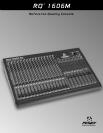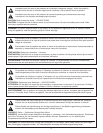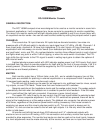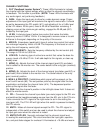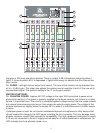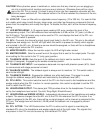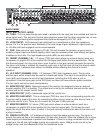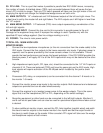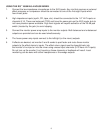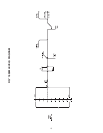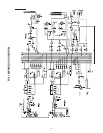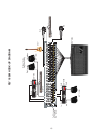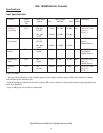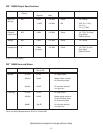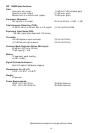
BACK PANEL
INPUT AND OUTPUT JACKS:
29. THRU: This is a pass-through jack wired in parallel with the input jack (non-solated and has the
same signal level). This jack also has the same phantom power that the other connector has, so use
caution when connecting other equipment that could be damaged by 48 V DC. (#15)
30. LOW-Z INPUT: XLR balanced input optimized for a microphone or other low-impedance
source. Pin 2 is the positive input. Because of the wide range of gain adjustment, signal levels up
to +32 dBu (with pad engaged) can be accommodated.
31. PAD: Attenuates the input signal by 20 dB. This will increase the dynamic range to accom-
modate a higher input level before clipping, which may be necessary when close miking loud guitar
amplifiers or drum kits. The high-impedance inputs (#33) are also affected.
32. INSERT (CHANNEL 1-8): 1/4" stereo (TRS) jack which allows an external device (such as a
compressor or graphic EQ) to be inserted into the signal path before the tone equalization. The tip
has the send signal, the ring is the return input. A switch in the jack normally connects the send to
the return until a plug is inserted. By inserting a jack only to the first click (so that the internal switch
is not engaged), a preamp direct output is available without affecting the channel’s normal
operation.
33. HI-Z INPUT (CHANNEL 9-16): 1/4" balanced (TRS) high-impedance input. The tip is the
positive input, which should also be used for unbalanced inputs. This input is connected to the mic
input (#30) and changes the circuit’s input impedance (including the XLR) when a jack is
connected. It has the same gain as the XLR input, but does not have phantom power available.
The two inputs cannot be used simultaneously.
34. MONITOR OUT (XLR): Balanced output of the monitor mix designed to feed an external
monitor amplifier (Pin 2 is positive). The output level is set by the individual channel monitor send
controls and by the master monitor fader.
35. MONITOR OUT (1/4"): Unbalanced output of the monitor mix.
36. MONITOR LINE INPUT: This is a balanced (TRS) bus input to the corresponding monitor mix.
It can be used to expand the mixer by connecting another source (mixer or other device) here to
add to the monitor
’
s mix. There are no controls for this jack (0 dBu nominal).
37. MONITOR INSERT: 1/4" stereo (TRS) jack which allows an external device (such as a
compressor or graphic EQ) to be inserted into the monitor’s signal path. The tip has the send
signal, the ring is the return input. A switch in the jack normally connects the send to the return until
a plug is inserted.
38. WEDGE OUTPUTS: 1/4" unbalanced output to feed the wedge monitor amp. The signal is
exactly the same as that in the headphones, but has other features. When the talkback mic is active,
these outputs are diminished to prevent local feedback. If there is no plug connected into the right
output jack, the left and right wedge signals are summed to mono. Wedge levels are set by the
wedge control, and are independent from the headphone levels.
7
38
39
43
42
4041
31
33
34
37
32
30
29
36
35



